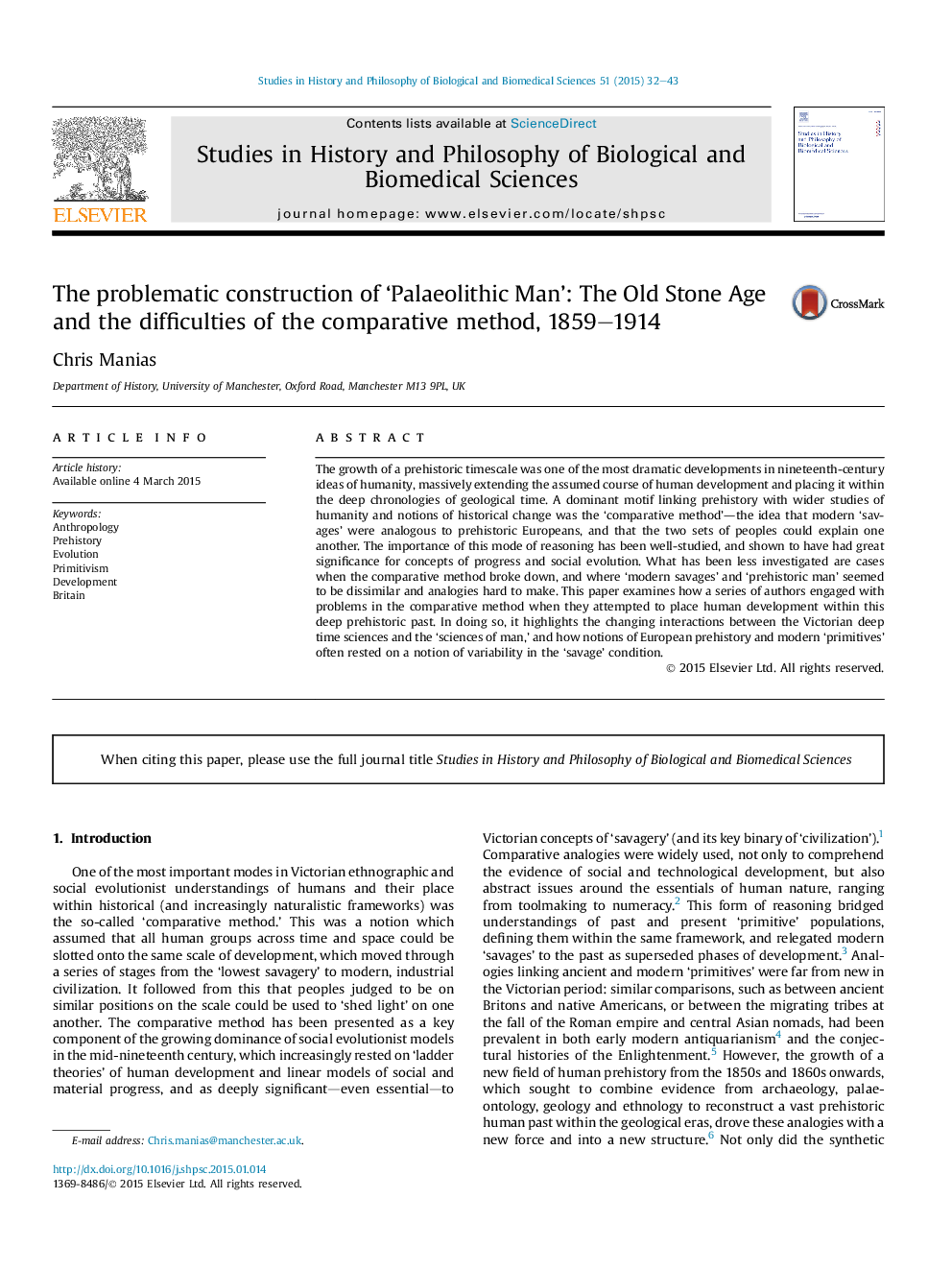| Article ID | Journal | Published Year | Pages | File Type |
|---|---|---|---|---|
| 7552388 | Studies in History and Philosophy of Science Part C: Studies in History and Philosophy of Biological and Biomedical Sciences | 2015 | 12 Pages |
Abstract
The growth of a prehistoric timescale was one of the most dramatic developments in nineteenth-century ideas of humanity, massively extending the assumed course of human development and placing it within the deep chronologies of geological time. A dominant motif linking prehistory with wider studies of humanity and notions of historical change was the 'comparative method'-the idea that modern 'savages' were analogous to prehistoric Europeans, and that the two sets of peoples could explain one another. The importance of this mode of reasoning has been well-studied, and shown to have had great significance for concepts of progress and social evolution. What has been less investigated are cases when the comparative method broke down, and where 'modern savages' and 'prehistoric man' seemed to be dissimilar and analogies hard to make. This paper examines how a series of authors engaged with problems in the comparative method when they attempted to place human development within this deep prehistoric past. In doing so, it highlights the changing interactions between the Victorian deep time sciences and the 'sciences of man,' and how notions of European prehistory and modern 'primitives' often rested on a notion of variability in the 'savage' condition.
Related Topics
Life Sciences
Agricultural and Biological Sciences
Agricultural and Biological Sciences (General)
Authors
Chris Manias,
